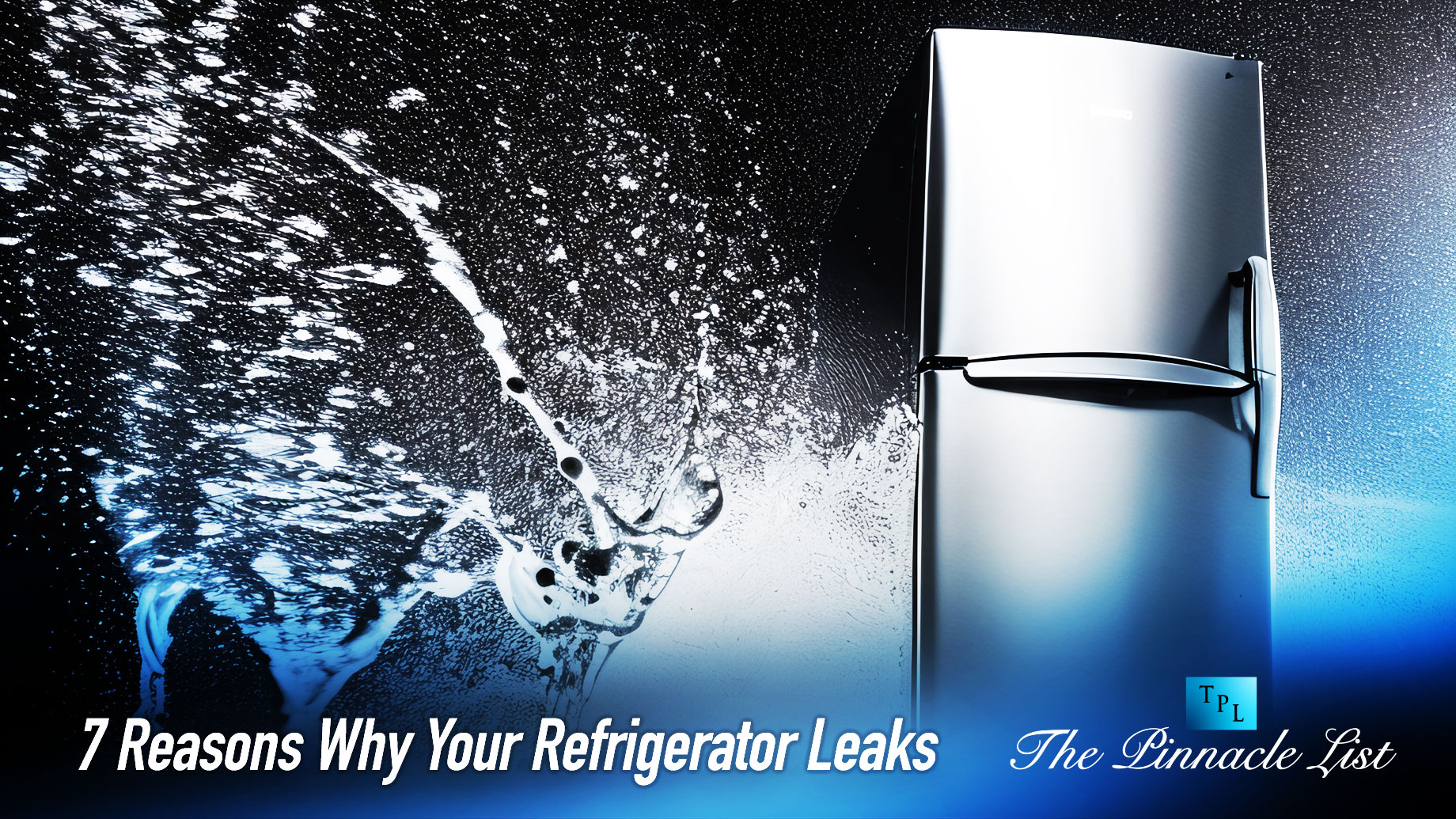
Is your refrigerator leaking? Before you panic and look for a new one, let’s try to figure out what the cause of the breakage is. It is likely that the solution to the problem is easier and cheaper than you think. But you can always contact an Appliance Repair Expert of Montreal or in your city.
First of all, make sure that it is the refrigerator that is the problem. After all, water near the refrigerator is not necessarily from the refrigerator at all.
So check that:
- No leaking pipes, radiators, or sinks, especially if they are in close proximity to the appliance.
- The washing machine or dishwasher is not the cause of water on the floor.
- Nothing has been spilled near the refrigerator.
- Nothing has been spilled inside it, whether it’s juice, soup, milk, liquid from spoiled fruit, etc.
If all of these points are “checked,” then the problem is really with your refrigerator. The following tips will help you determine why your refrigerator is leaking and understand whether you need to call a handyman or you can handle it yourself.
So, if you found a puddle near the refrigerator, the following has most likely happened:
1. Drainage tube is loose
As a result, the liquid, instead of going into a special tank, pours onto the floor.
Symptoms: Water is only under the refrigerator, the inside of the unit is dry, and there is no excessive ice and frost in the freezer compartment.
Solution: Quite often, the drain tube comes loose if the refrigerator has been moved from place to place or moved around, for example, during repairs. To fix the problem, move the unit slightly and fix the tube. Congratulations, you did a great job without a handyman!
2. Cracked or broken fluid reservoir
Symptoms: The refrigerator is dry inside, with liquid only underneath and mostly in the back.
Solution: You can verify that the problem is in the reservoir by moving the refrigerator slightly away. As a rule, the crack is visually noticeable, as well as water seeping through it. Here, it will be necessary to change the tank, i.e., to call a master.
3. Broken evaporator heater in the No Frost system
Symptoms: There is a lot of ice and snow in the freezer compartment of the refrigerator; water can be seen mainly under the unit.
Solution: In such a breakdown in the refrigerator of the “No Frost” system (which means “not frosting”), technological processes are violated, humidity increases, and as a result, ice is frozen.
When you open the freezer, the ice melts, and the water flowing down the drain channel overflows the reservoir, which is not designed for so much liquid. If you are faced with this problem, you will have to call a master. The only way to fix the puddle under the refrigerator is to replace the evaporator heater.
4. The drain hole in the freezer is clogged
Symptoms: Water both inside and outside – leaks right out of the freezer. There may also be a lot of ice inside the freezer from water not flowing down.
Solution: In this situation, it is likely that the drainage hole of the freezer is clogged. To eliminate the leak, you need to clean it. Theoretically, you can do it yourself, but keep in mind that the hole is inside the case.
If you do not have the appropriate experience and you do not know how to get to the drain hole, it is better not to risk and ask for help from a specialist.
5. Drain hole in the cooling compartment is clogged
Symptoms: Water both outside and inside the refrigerator. Most often, there is a puddle under the fruit and vegetable drawers. And with a very large amount of water, it seeps outward through the door seal and leaks down the front of the refrigerator.
Solution: It is necessary to clean the drain hole where crumbs, food particles, etc., could get in and prevent water drainage. You can do this simple procedure yourself.
Try, for example, pouring water under pressure from a large syringe without a needle or pushing particles through with a thin cocktail straw. To avoid clogging the drain hole in the future, make sure that the food is pushed slightly away from the back wall.
6. The refrigerator door does not close tightly enough
Symptoms: Water can be either outside or inside the refrigerator.
Solution: Because the door does not close tightly, the refrigerator freezes more than necessary – ice forms on the walls. At the same time, when warm air gets inside, the ice begins to thaw.
Liquid partially accumulates inside the refrigerator and partially gets into the water trap, overflowing it. The problem is often solved by leveling the refrigerator or adjusting the door hinges. If that doesn’t help, most likely, the seal is worn out.
7. The rubber seal on the door of the refrigerator or freezer compartment is worn out
Symptoms: Water can be either outside or inside the refrigerator.
Solution: As in the case described above, the refrigerator over-freezes, and the ice melts, resulting in a puddle. The rubber seal will have to be changed here.
Conclusion
Of course, the reasons why the refrigerator leaks are much more than described in the article. Much depends on the peculiarities of operation of the unit, its model, age, etc.
If you want your refrigerator to serve long and properly, do not try to experiment and fix it yourself. Consult with an expert – you can do this on appliancerepairexpert.ca – and if it turns out that you cannot do without repairing your fridge, do not hesitate to call your masters!
Do not postpone for tomorrow what you can solve with one call right now!